 |
The American Revolution began in 1775 with skirmishes at Lexington and Concord, Massachusetts. Though defeated at Lexington, the American forces (composed largely of colonial Minutemen like the one to the left) triumphed at Concord in routing the British. At the Battle of Bunker Hill, the colonial forces again lost, but not before causing many British casualties. |
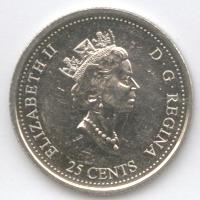 |
Shortly after the war began, American forces in New York were victorious at Crown Point and Ticonderoga. Some of those same forces then advanced into Canada (home of the Canadian quarter at left), hoping to take Quebec and foment a rebellion there. The attempt failed. |
 |
During the early months of the war, many Americans thought they were fighting for reforms, not secession. In 1776, however, the Continental Congress (which included Caesar Rodney, at left) voted for independence, with Jefferson's eloquent Declaration of Independence explaining the Congress's rationale. |
 |
The British evacuted Boston, encouraged by staunch colonial opposition there, to relocate headquarters to New York City. Washington's fledgling army in New York was chased by General Howe's British forces across Long Island, through Manhattan, over the Hudson River, through New Jersey, and over the Delaware River before stopping. However, Washington snuck back across the Delaware River (seen at left) on Christmas Day to win two surprise victories at Trenton and Princeton, New Jersey. |
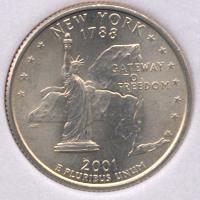 |
The British developed a plan for forces under Howe, Burgoyne, and Leger to converge in upstate New York and conquer the Hudson River (seen on the map at left), dividing the colonies in half. Howe, for various reasons, never showed up. Leger was attacked at the Battle of Oriskay before he could show up. Burgoyne's slow-moving force was all that remained when Americans victoriously attacked it at the Battle of Saratoga in 1777. |
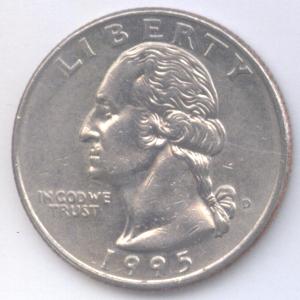 |
Washington (seen at left) and British General Howe continued to battle each other. Howe defeated Washington at Philadelphia, Brandywine, and Germantown, and forced Washington to spend the winter at Valley Forge. |
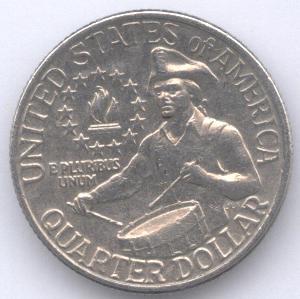 |
During the latter years of the war, action increased in the South, with battles at Savannah, Charleston, Wilmington, King's Mountain, and Cowpens. Though American forces (like the man at left) were doing an admirable job on their own, it would require French aid, secured after the Battle of Saratoga, to oust the powerful British. |
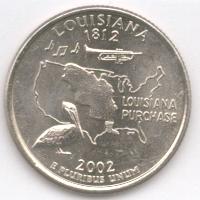 |
The war effectively ended at the Battle of Yorktown in 1781, when British forces under Cornwallis were cornered by a joint effort of Washington on land and the French navy at sea. The Paris Peace Treaty of 1783 granted the new United States all the territory that was east of the Lousiana Territory (seen on map at left), north of Spanish Florida, and south of Canada. |
 |
The newly independent nation operated under the Articles of Confederation for several years before the 1789 ratification of the new U.S. Constitution. |








